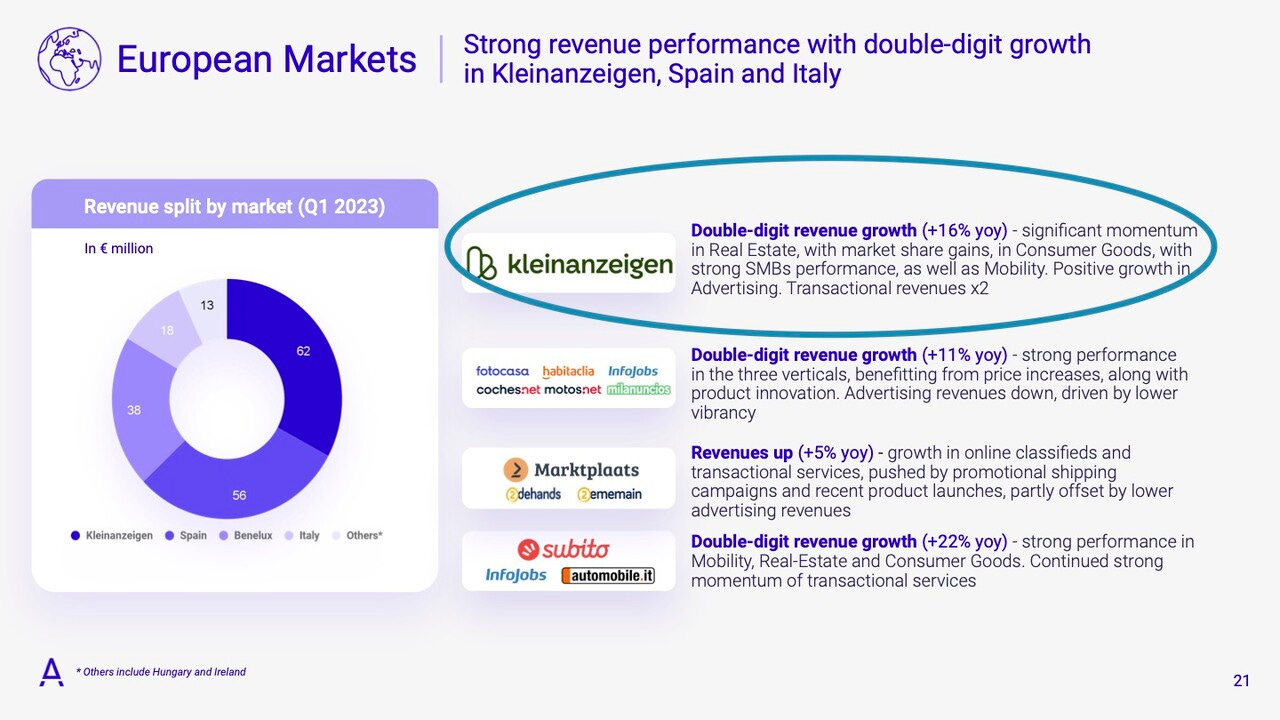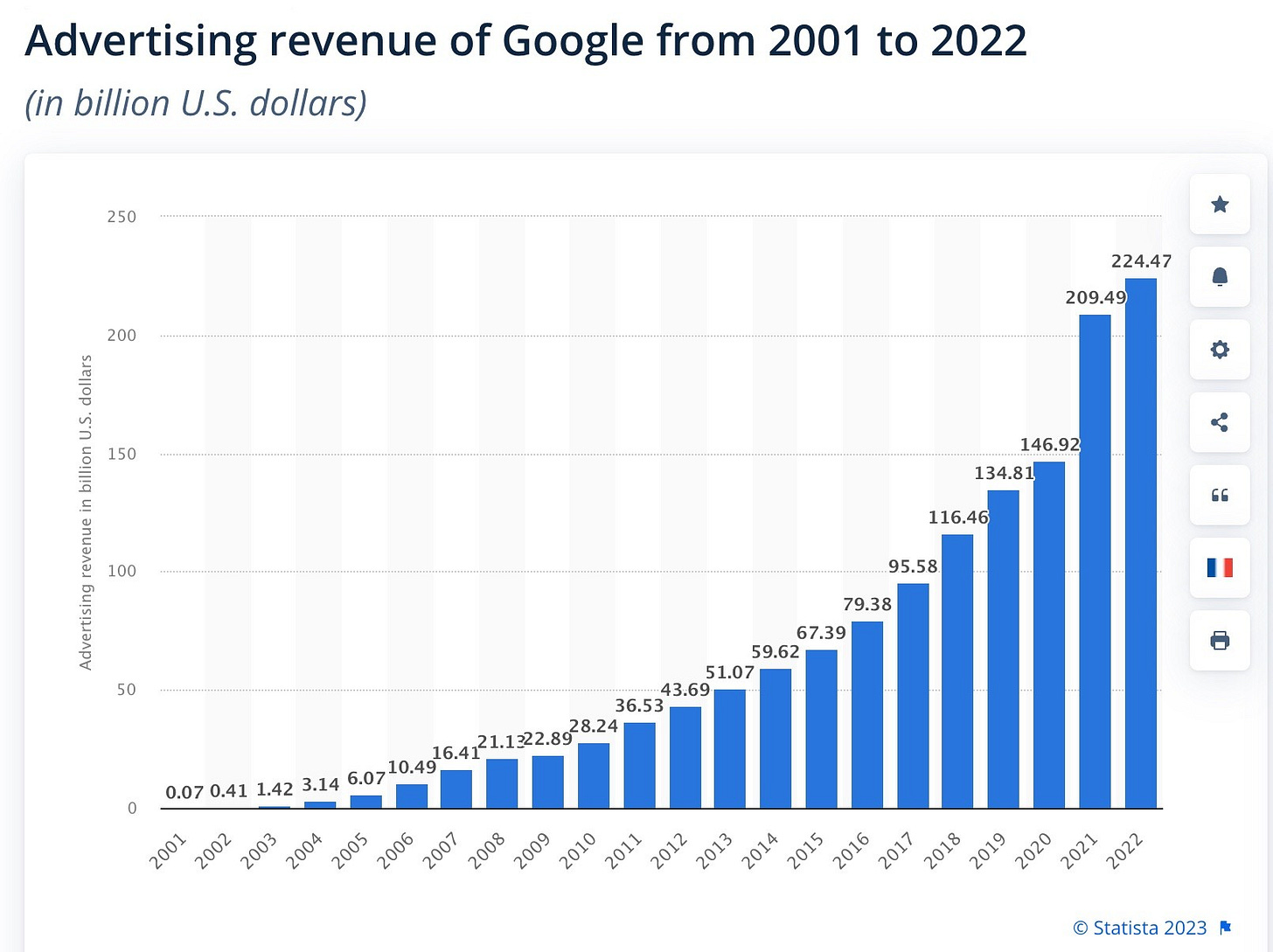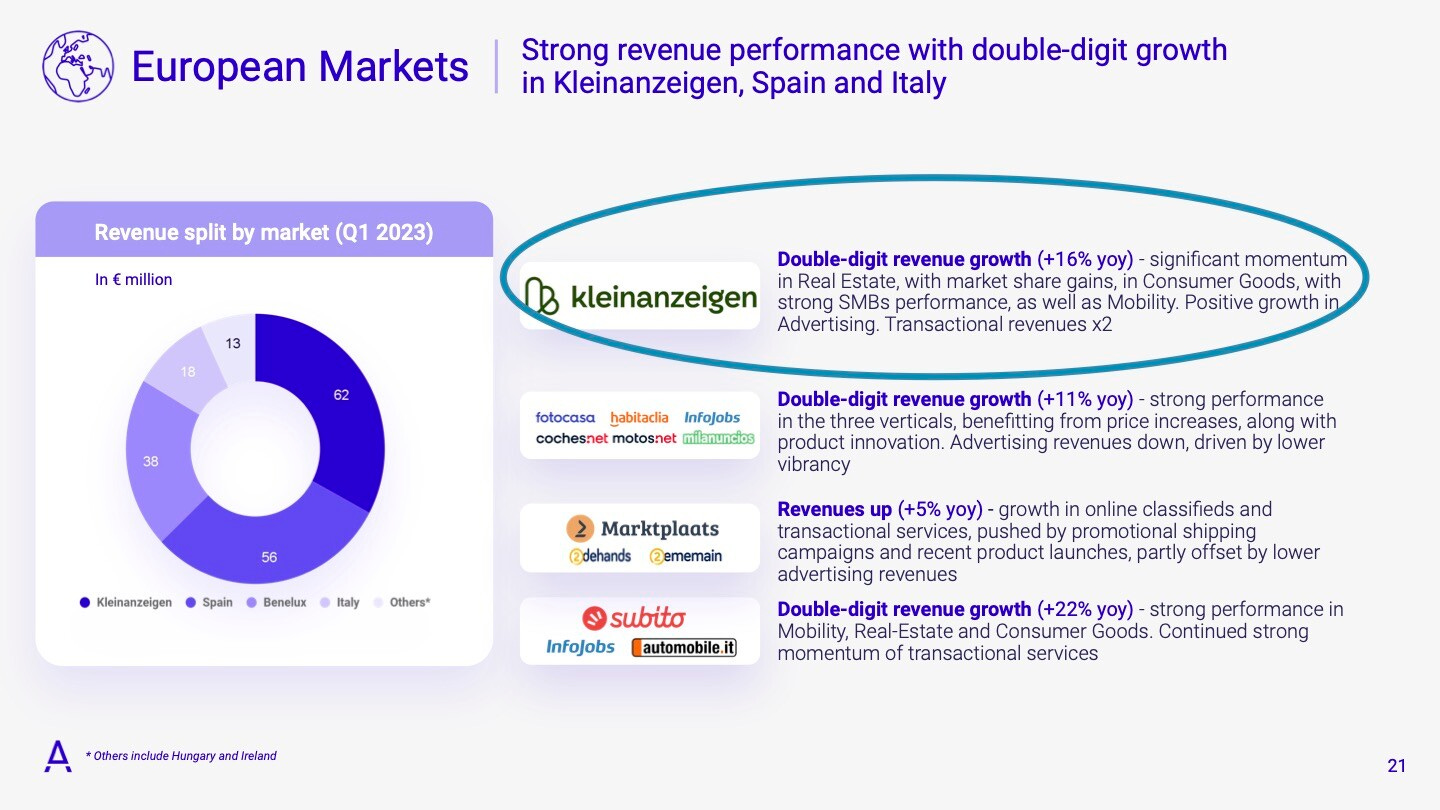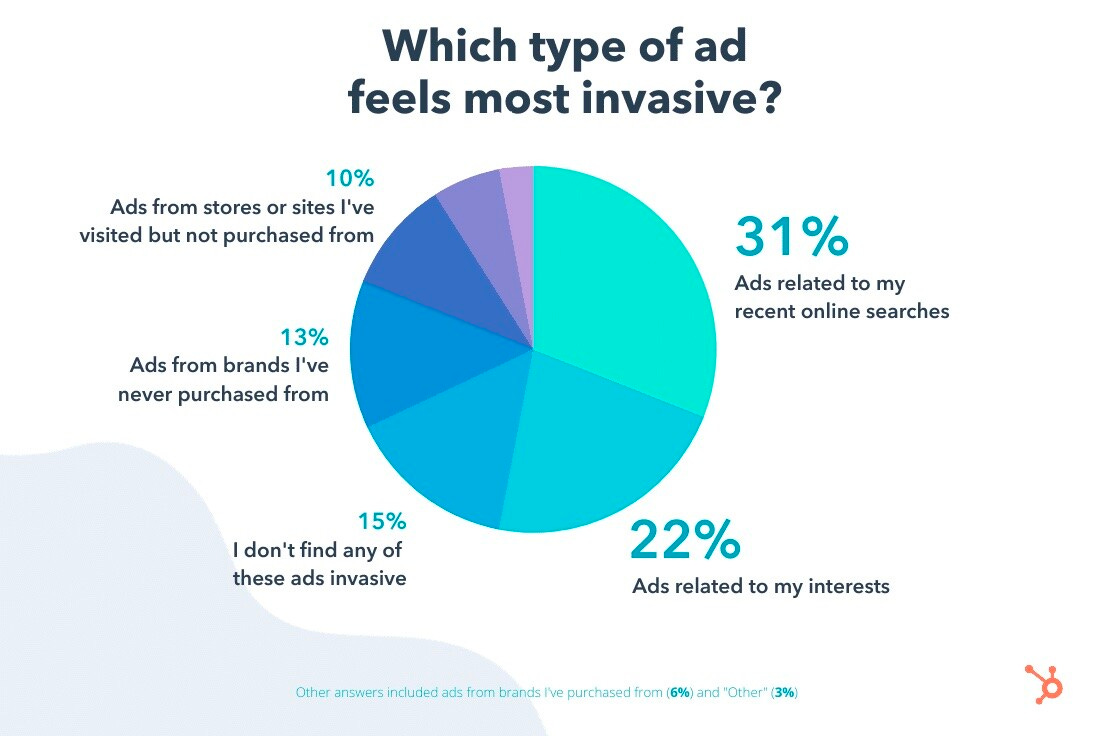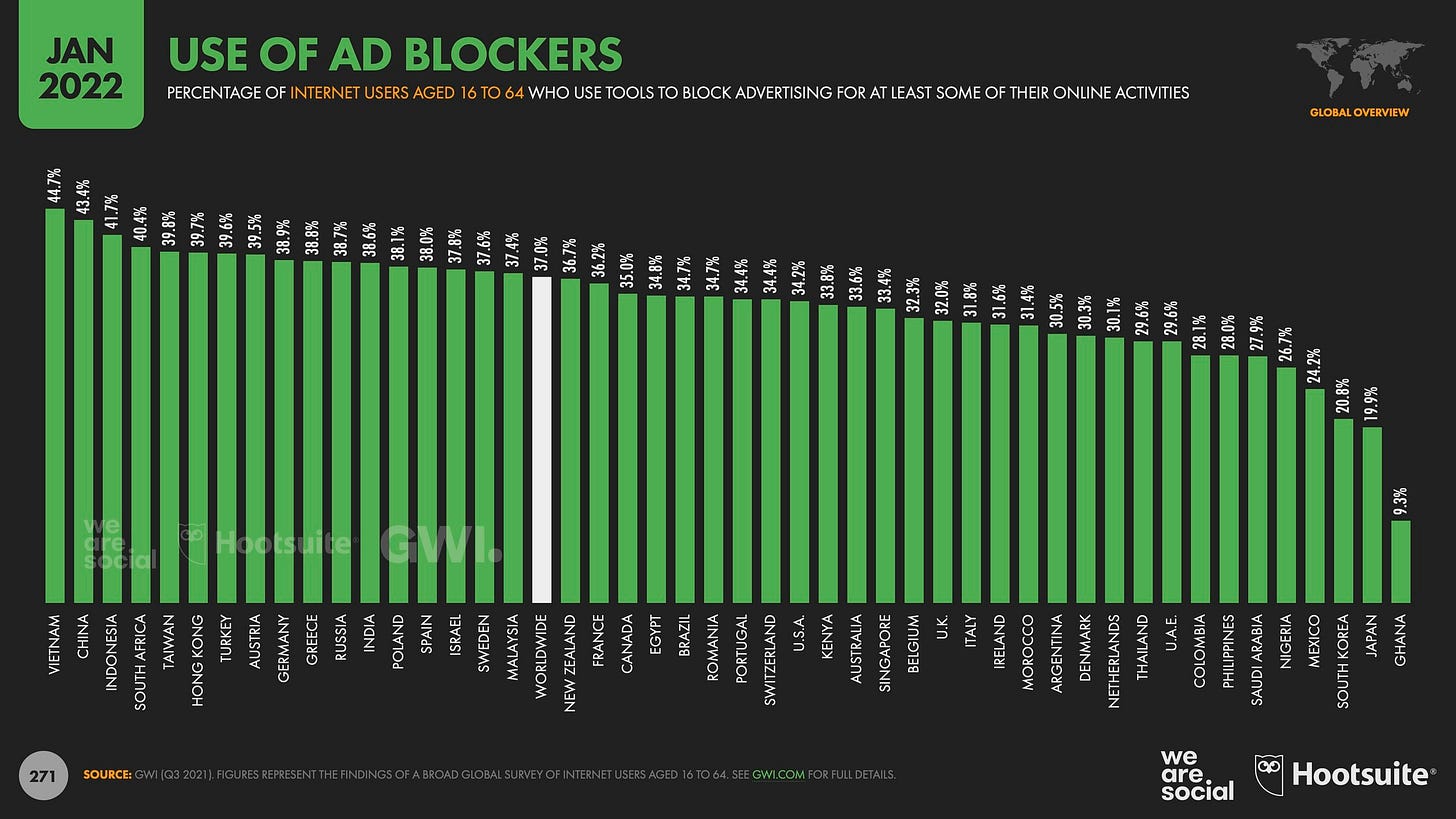Online Advertising Revenue Stream: Maximizing its Profitability Potential
Today's edition is about the Online Advertising revenue and maximizing its long-term profitability potential.
The total market is huge: Google Advertising generated a staggering $224 billion in revenues in 2022, Meta $113 billion. Online businesses with large audiences – like Adevinta with its 1 billion users – have benefited from the high-margin online advertising revenue stream for years. In 2022, Advertising brought in €337 million, or about 20% of the total Adevinta revenues.
The growth is slowing down. Most companies refer to the difficult macroeconomic environment as a key driver. To quote Sundar Pichai: “It’s clear that after a period of significant acceleration in digital spending during the pandemic, the macroeconomic climate has become more challenging.”
At the same time, this remains one of the highest-margins revenue streams – for the advertising giants like Alphabet or Meta, but also for the businesses with high user volumes when they serve well-targeted ads. Programmatic advertising, with its 50%+ profit margins if set up well, accounted for 84 percent of the global digital advertising spending in 2022 according to Statista research.
What are the key success factors for a profitable advertising stream?
1. Focus on building a vibrant core business and customer base.
A strong, growing, engaged user base allows generating healthy advertising revenues. In turn, a strong advertising revenue stream delivers profits that can be reinvested into further growth. However, advertising stream by itself will not directlycontribute to your user engagement, growth, or business fundamentals.
2. First-party advertising is a more sustainable revenue stream, but it requires significant internal tech investments.
It pays off to be strategic about the role that advertising will play in your business model in the long-term, when evaluating Tech investments into the first-party advertising technology. They will not pay back in the short term (1-2 years). But on the longer horizon, this is a great sustainable way of generating advertising revenues – see the Admarkt case study of Marktplaats.nl and other insights on my Substack blog.
3. Be intentional about allocating and targeting branding and performance advertising across your platform.
A diverse and vibrant online platform creates an opportunity to use branding campaigns as well as performance advertising in a targeted way, increasing the ROI on the advertising space used and reducing the customer “irritation” factor. Measuring both the revenue and the user engagement effect of the advertising campaigns can help with allocation decisions and improve the ROI and long-term outlook for both.
4. When estimating the advertising revenue potential, be aware of the ad blockers adoption rates, and the effect on the ability to generate advertising revenues from your business’ target group.
Ad blocking varies significantly per country: 39% in Germany, 37% in the US, 31% in the Netherlands according to the Hootsuite 2022 report. A difference of 25ppt between two neighboring Western European countries is huge when it comes to the advertising potential.
But also gender and devices matter for the usage rates. If your audience are predominantly 25–34-year-old males, you will see 54ppt (!) more ad blocker adoption in the US than if your target group were 55-64-year-old females. There are ways of asking the users to white-list your site specifically – from pop-ups with a kind request of support, to not allowing access without turning off an ad blocker.
In the end, the key lever towards healthy advertising revenues remains the same: a vibrant platform with healthy user fundamentals.
Enjoying this?



